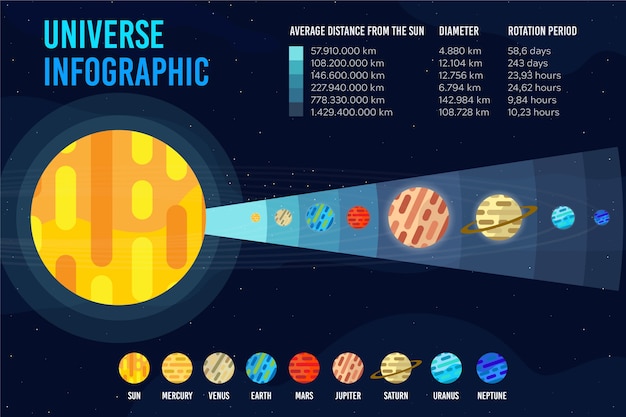

Did you know that Mercury is the smallest planet in our solar system?
Mercury is the closest planet to the Sun, which makes its surface extremely hot.
Unlike other planets, Mercury has no atmosphere, causing extreme temperature differences.
The surface of Mercury is covered in craters, similar to our Moon.
Mercury has a very thin atmosphere consisting mainly of helium, hydrogen, and traces of oxygen.
One day on Mercury lasts approximately 176 Earth days due to its slow rotation.
Despite its small size, Mercury has a surprisingly strong magnetic field.
Mercury’s magnetic field is responsible for stunning auroras near its poles.
The temperature on Mercury can range from -280°F (-173°C) to 800°F (427°C).
Mercury is named after the Roman god of speed, which is fitting considering its proximity to the Sun.
The first spacecraft to visit Mercury was Mariner 10 in 1974.
In 2008, NASA’s MESSENGER spacecraft became the first to orbit Mercury.
Due to strong gravitational forces, Mercury has many cliffs and scarps on its surface.
Mercury has the second-highest density of any planet, after Earth.
The gravity on Mercury is only 38% of Earth’s gravity, meaning you would weigh much less.
The surface of Mercury reflects sunlight, making it appear very bright from Earth.
Mercury’s rocky terrain is a result of volcanic eruptions that occurred billions of years ago.
Mercury has the longest known river in our solar system, called the Discovery Rupes.
Unlike Earth, Mercury lacks a true atmosphere, meaning it has a vacuum-like environment.
Mercury’s proximity to the Sun makes it difficult to observe from Earth without a telescope.
The surface of Mercury contains large amounts of iron, giving it a reddish-brown appearance.
Mercury has a very thin layer of dust and small particles that cover its surface.
Mercury experiences more extreme temperature variations than any other planet.
Scientists believe that Mercury may have once had an atmosphere, but it was blown away by solar winds.
Mercury is the least explored planet in our solar system due to the challenges of reaching it.
Mercury’s surface is marked by many ancient lava flows.
The surface temperature of Mercury can be hot enough to melt lead.
Despite its extreme temperatures, some craters on Mercury contain ice in their permanently shadowed regions.
Mercury’s orbit is highly elliptical, which means it gets much closer to the Sun at certain points in its orbit.
Due to its small size, Mercury does not possess a moon.
The tallest cliff on Mercury, called the Enterprise Rupes, is about three miles high.
Mercury’s surface is littered with impact craters, evidence of its violent past.
The orbit of Mercury is so eccentric that it causes the planet to experience a phenomenon called a day-night resonance.
The high temperatures on Mercury’s surface cause metals such as aluminum and titanium to evaporate.
The surface of Mercury is covered in a layer of dust, often referred to as a regolith.
Mercury’s surface is highly reflective, making it appear bright when viewed from Earth.
Due to its proximity to the Sun, Mercury has the shortest year of any planet, lasting only 88 Earth days.
Mercury was known to ancient civilizations such as the Babylonians and Greeks.
Mercury has been the subject of many scientific missions aiming to study its composition and geological features.
The gravity on Mercury is strong enough to affect objects on its surface, causing them to creep over time.
Mercury has a very tenuous exosphere, which consists of atoms and molecules escaping from its surface.
The first image of Mercury’s far side was captured by NASA’s MESSENGER spacecraft in 20
Despite its proximity to the Sun, some areas of Mercury’s surface remain permanently shadowed, allowing for the formation of ice.
Mercury is one of the five planets visible to the naked eye from Earth.
The extreme conditions on Mercury make it an inhospitable environment for life as we know it.
Around the world, coffee enthusiasts enjoy Monin coffee concentrate since it is a multipurpose product. Conveniently combining…
The Importance of Choosing the Right Shower for Your Bathroom Renovating your bathroom can be…
Usain Bolt holds the record for the fastest 100-meter sprint in history.Bolt was named Sportsman…
Love is in the air... and it smells suspiciously like chocolate!Roses are red, violets are…
Life's a beach, take a picture and relax.Sun, sand, and salty kisses. That's what beach…
Hungary is home to the largest thermal water cave system in the world.The Rubik's Cube…